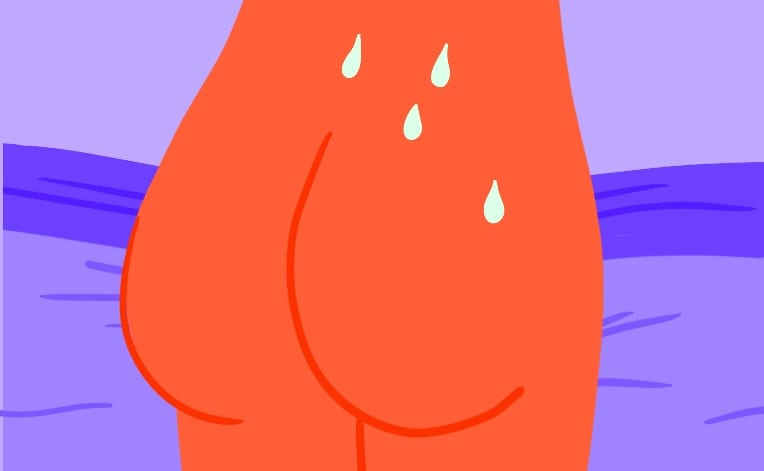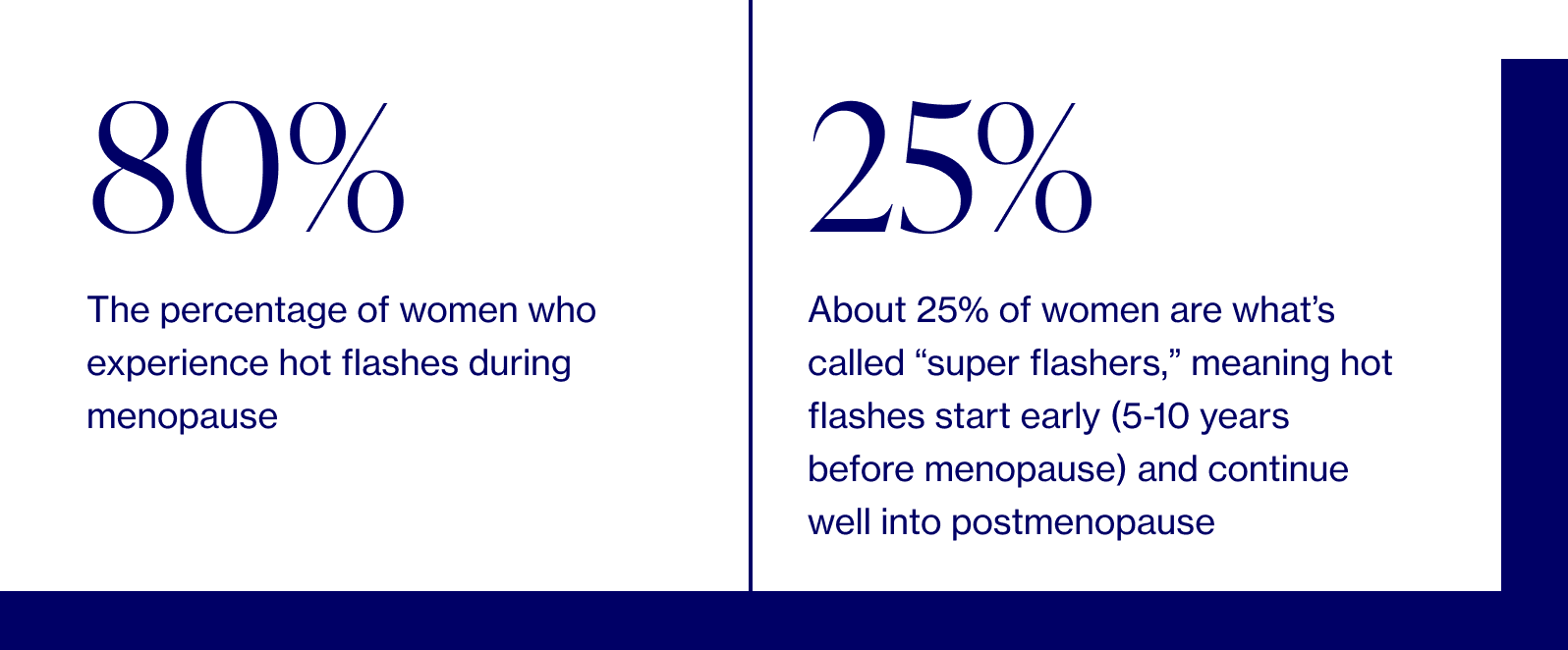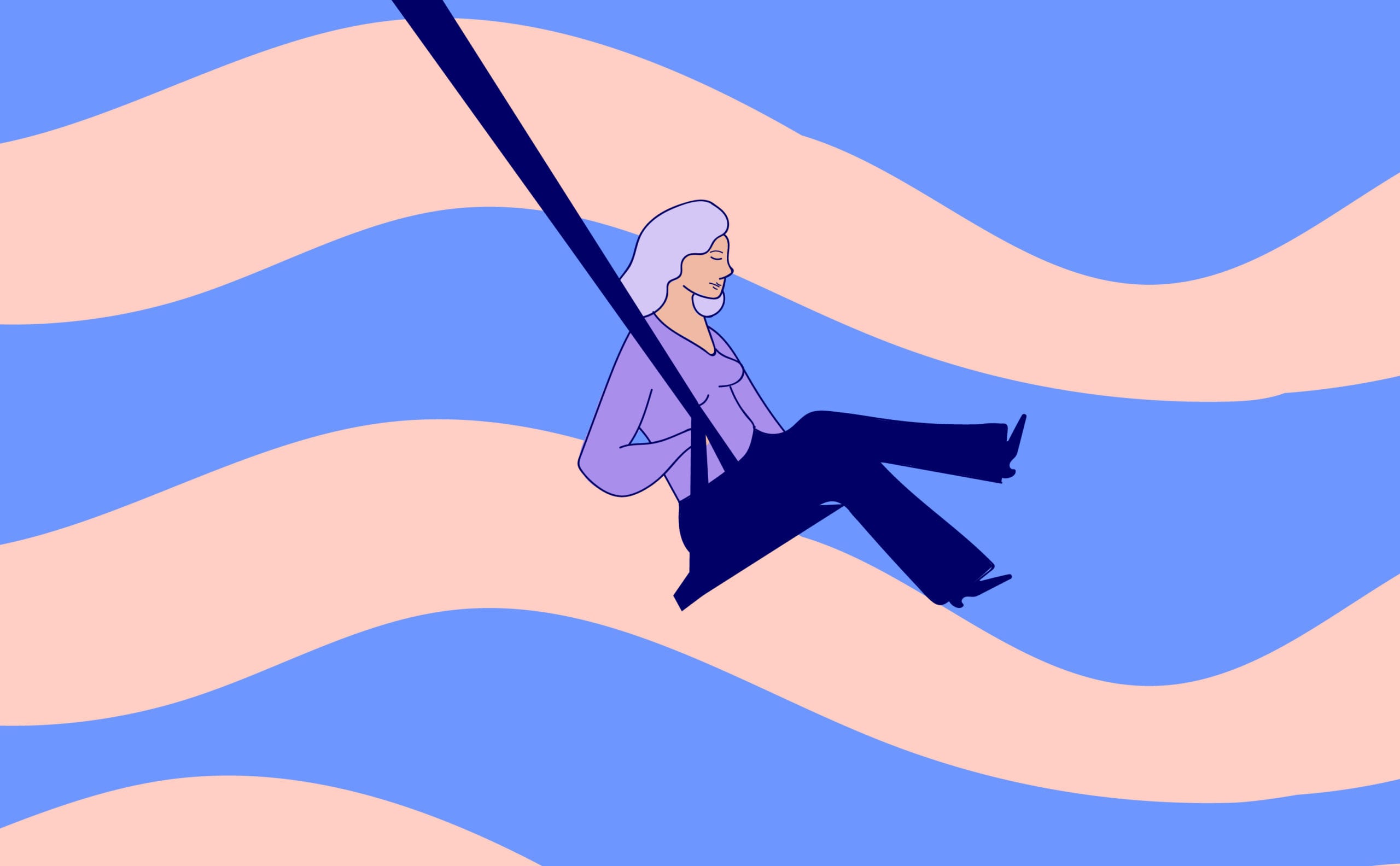We’re all about equipping you with the know-how to understand your symptoms, and we especially emphasize the specific, tangible ways to manage them. Our goal is to empower YOU to take charge of your menopause journey, starting today.
A quick note about product recommendations…Elektra Health is not paid to feature any products. We just like them and think you might too, though we can’t guarantee any results.
Lifestyle
Nutrition & Diet
Food can be used as a powerful tool to minimize hot flashes by supporting our hormone health (specifically cortisol and insulin). Below are specific foods that Elektra’s founding physician, Dr. Anna Barbieri, MD recommends, along with info on the science behind each:
Soy
Soy products such as tofu contain isoflavone compounds (genistein & daidzein) that can help control hot flashes. It works by essentially mimicking natural estrogen. Studies have show benefits with isoflavone supplements and one small study suggests that dietary soy might also help too. As soy is a great source of plant protein, it might be worth a try adding soy to your diet to see if it helps.
And no, 1-2 servings of whole soy (edamame, soy milk, tofu, miso) do not increase breast cancer risk and are likely safe even for women who have had breast cancer (one serving = 1 cup of soy milk, 1/2 cup of edamame or tofu). Whole soy, however, may not be optimal for women with autoimmune conditions, but soy isoflavones can still be used. We recommend choosing organic soy whenever possible, as conventionally produced soy often comes from large farms with high pesticide and chemical use.
Bonus points if the soy product is fermented (think tofu, miso, or tempeh).
Flaxseed
Like soy, ground flaxseed contains phytoestrogens and may help reduce hot flashes. The research shows conflicted results. But like dietary soy, there are other health benefits. Ground flaxseed is a great source of fiber and omega 3s. Add 1-2 tablespoons to smoothies, oatmeal, yogurt — and be sure it’s ground! Consuming it in the whole seed or oil form does not deliver the same benefits.
Legumes
Legumes such as chickpeas and lentils are weaker sources of phytoestrogens and may help in reducing hot flashes, although we aren’t clear on the magnitude on the effect.
Evidence points to the power of a whole-food, plant-heavy diet in reducing vasomotor symptoms both directly and indirectly by promoting cardiovascular health and weight loss. In fact, in a study of more than 17,000 women with baseline vasomotor symptoms, those who lost more than 10 pounds (or 10%+ of their baseline weight) were significantly more likely to have symptoms disappear compared to women who did not lose weight.
While food can be a beneficial tool in mitigating hot flashes and night sweats, it can also do the opposite. Common triggers include:
Spicy foods
Exercise caution when it comes to late-night dinners that bring the heat! They can also, well, bring YOU the heat and cause full-body flushing.
Alcohol
While any alcohol can be a trigger, red wine is known to be particularly problematic. If you do choose to drink, try switching to white wine or a different beverage and enjoy your drink with food, earlier in the evening, and not right before bed. Or try a zero proof cocktail made from a Seedlip non-alcoholic spirit (watch Elektra’s take on mocktails here).
Caffeine
While the correlation between coffee and sleep is widely known, the effect your cup ‘o Jo has on hot flashes can be just as bothersome and a trigger for many. We recommend sticking with decaf when possible if caffeine is your trigger.
Behavioral & Holistic Practices
The following integrative, holistic therapies can be effective in managing and mitigating the symptoms of hot flashes.
Mindfulness-based stress management
While many alternative therapies haven’t been clinically studied, the impact of mindfulness-based yoga on stress and anxiety has — and the results are promising. Since stress has been identified as a hot flash trigger, it’s worth giving something like meditation or yoga a whirl — while recognizing, of course, that it takes time to cultivate a practice and begin reaping the benefits (this isn’t a “quick fix”).
Paced breathing exercises
The Menopause Society recommends paced respiration (slow deep breathing sustained for a specific period of time) as a behavioral treatment for hot flashes. To start, try for five minutes twice per day, with a target rate of 6-8 breaths per minute. If that works, try to get up to 15-minute sessions. It might feel a bit odd and unnatural at first, but stick with it, and it will become like second nature.
Cognitive Behavioral Therapy (CBT)
CBT involves working with a coach or therapist to recognize and change beliefs — including negative thoughts and worries — that may be triggering or exacerbating hot flashes. That’s the “cognitive” part. And then there’s the “behavioral” part, which helps you develop better habits and a mindset to improve the hot flash experience (vs the hot flash itself). It’s ideal for those looking to address underlying causes while working towards long-term management.
Acupuncture & Acupressure
Acupuncture is when extremely thin needles are inserted into the skin at strategic points (don’t worry — it doesn’t hurt!) and acupressure is when gentle pressure is used to stimulate certain points on your body. Both techniques have been studied in reducing hot flash severity and decreasing frequency (in addition to promoting sleep and reducing anxiety), and there have been mixed results. A 2016 study, which compared an acupuncture group with a control group, found that hot flash frequency declined by 36% over six months with the acupuncture group, while frequency increased by 6% in the control group.
So while some studies haven’t showed benefit, acupuncture is worth trying, especially if behavioral approaches aren’t working or you’re not a candidate for hormonal or other pharmacologic treatment.
Bedroom
When it comes to night sweats, it’s important to keep your bedroom cool. Right around bedtime, our body temperature drops 1-2 degrees, which signals to our internal clock that it’s time to hit the hay. In doctor-speak, this is what’s called “thermoregulation.” We recommend keeping your bedroom at a cool 60 – 67°F and, if that’s not enough, trying the following (although there’s no clinical evidence in support of these techniques, anecdotal evidence is promising):
- Cooling sheets made with bamboo, which effectively wicks moisture (read: sweat) from your skin
- Cooling mattress pad or blanket, or a heated blanket for your bed partner (look into one with dual controls to accommodate your partner)
- Cooling system for your bed that uses circulating water to maintain a consistent, cool temperature (e.g., this hydro-powered one from ChiliSleep)
- A fan! Simple, low-cost, and effective
Exercise
Although exercise does not directly reduce vasomotor symptoms, it is beneficial for a slew of other symptoms that may indirectly affect hot flashes, such as sleep health and mood. We recommend taking up yoga to promote relaxation.
Supplements & Over-the-Counter Solutions
Supplements and over-the-counter solutions can be effective in supporting your sleep health…if you choose wisely. We recommend consulting with your healthcare provider first to ensure you’re using something with optimal efficacy and safety (i.e. backed by clinical research) or consulting with Elektra’s providers for medical advice. Here’s a quick primer from our team on how to go about selecting high-quality supplements.
Several herbs and supplements have been studied for control of vasomotor symptoms; however, due to the studies’ small sample size and multiple variables, it’s impossible to make definitive claims on their efficacy and safety. That said, these four have the strongest record to date:
Soy Isoflavones
As mentioned above, soy isoflavones are phytoestrogens that work like estrogen would in the body. Derived from soybeans, this supplement has been shown in most research to help control hot flashes, although it may take several weeks to experience full results.
Vitamin B6
B6, which is one of eight B vitamins, has been shown to boost serotonin levels and, as a result, help minimize hot flashes. However, like with all things that may be helpful, remember that too much of a good thing is well… too much of a good thing. Excessive levels of vitamin B6 may actually cause nerve damage and adults should stay well below the level of 100 mg of B6 per day from all sources. We recommend no more than 50 mg of vitamin B6 daily in a supplemental form to avoid this risk.
Black Cohosh
Also known as rattleweed and bugbane, black cohosh is a perennial herb that belongs to the buttercup family and is a common ingredient used to treat symptoms of hot flashes. Studies are mixed when it comes to black cohosh, with many not showing much benefit. It’s mostly safe, but there have been rare reports of liver injury when using it.
Swedish Flower Pollen
Swedish flower pollen is an extract made from the pollen and pistils of a certain family of grasses. It helps hot flashes by acting directly on the temperature control area in the brain. This is not a phytoestrogen, and therefore frequently used by women with hormone-positive breast cancer. We like Relizen by Bonafide.
Rhapontic Rhubarb (aka ER731)
This extract from the root of the rhapontic rhubarb plant has been shown to reduce the frequency and severity of hot flashes. ER731 is not to be confused with the rhubarb we grow as a vegetable in spring for pies and jams.
Prescriptions
Hormonal
Hormone replacement therapy is a viable choice for many women with vasomotor symptoms.
Low-dose contraceptives
Some doctors advise perimenopausal women to take low-dose birth control pills as a way to regulate hormones that impact our cycles, decrease risk of ovarian/uterine cancer, bone loss, and hot flashes. Compared to typical birth control pills, which contain 20-50 micrograms of estrogen, estrogen prescribed to women for menopause most often contain 10-20 micrograms.
Menopausal Hormone Therapy (MHT)
The treatment option with the highest reported rate of efficacy for hot flashes is estrogen-based MHT (previously referred to as hormone replacement therapy/HRT), which comes in the form of a skin patch, gel, cream, spray, or pill. It’s proven effective and, as an added bonus, also helps with other symptoms of menopause like vaginal dryness and pain with sex. Estrogen-only therapy is generally for those who’ve had a hysterectomy. For those of us with a uterus, estrogen treatment is combined with another main female hormone, progesterone. HRT is safe for most women, however for some, it can increase risks of breast cancer, liver disease, and stroke. Therefore, HRT always requires an individualized approach. To learn more, refer to our full guide to hormone replacement therapy (HRT).
Tissue selective estrogen complex
Tissue selective estrogen complex involves a combination of selective estrogen receptor modulators (SERMs) and estrogen, which is most often recommended to postmenopausal women for the joint purpose of vasomotor symptom treatment and osteoporosis prevention. One common brand you may have heard is Duavee (it’s generic name is a mouthful: conjugated estrogens/bazedoxifene).
Non-Hormonal
Unable to consider hormonal therapies, or just not interested? Don’t worry, you won’t be left stranded on a hot flash island (no pun intended). There are 100% still options for you, including these pharmacologic non-hormonal treatment options, which have been shown to be safe and effective in reducing the severity and frequency of hot flashes.
Fezolinetant (Veozah)
FDA-approved in May 2023, fezolinetant is the newest medication in our hot flashes arsenal. This novel drug, a neurokinin 3 (NK3) receptor agonist, blocks a brain chemical called neurokinin B (NKB) that regulates the body’s temperature. Before menopause, the body maintains a healthy balance between estrogen and NKB. But when estrogen levels drop during menopause, NKB levels become relatively high, which can trigger hot flashes and night sweats. By blocking NK3 receptors, the balance is restored.
In clinical trials, it reduced the frequency of moderate – severe hot flashes by about 60%, in addition to reducing the severity.
SSRIs/SNRIs
SSRIs are selective serotonin reuptake inhibitors and SNRIs are serotonin and norepinephrine reuptake inhibitors — total tongue-twisters! These neurotransmitters are typically used as antidepressants; however, they’re also effective in treating certain menopausal symptoms such as hot flashes. They work by regulating serotonin (the “happy hormone” that controls mood) and norepinephrine (plays a key role in the body’s “fight-or-flight” response to stress). Some examples include escitalopram (Lexapro), sertraline (Zoloft), and venlafaxine (Effexor).
Gabapentin
Gabapentin (Neurontin) is an anti-seizure medication also used to treat menopausal symptoms (e.g., vasomotor symptoms and sleep disruptions).
Oxybutynin
Oxybutynin (Ditropan), a medication commonly used for urinary incontinence, has also been shown to be effective for hot flash treatment.
We’re always keeping an eye out on emerging research and the latest clinical studies. Subscribe to our weekly Elektra Digest for the latest, science-based info direct to your inbox. Something work well for you that’s not listed here? We want to hear it! Shoot us a note at [email protected]. (We’re human, promise.)
Pro tip #2
Wind down after a long day with meditation, deep breathing exercises, and sleep music/sounds — we’re big fans of Sacred Acoustics. These techniques can also help if you wake up with night sweats, but the key here is to practice during the day first when you’re not tossing and turning. This way, when you need the skill, it’ll be there.
Pro tip #3
Track your hot flashes in a journal that lives somewhere visible (next to your bed, on the fridge). Set a reminder at a specific time each day to identify any triggers. Bring it to your doctor’s appointment to have a more informed, productive discussion tailored to YOUR specific pain points. Elektra’s tracker is a go-to place to start.
Disclaimer: This information is for general educational purposes, and should not be used as a substitute for medical advice, diagnosis or treatment of any health condition or problem.
As with anything you put into your body, taking dietary supplements can also involve health risks. You should consult a medical professional before taking supplements and inform your doctor about any supplements, as well as any medications you already take, since there may be interactions.
Helpful? Share the wealth!
Share with a friend who deserves evidence-based expertise &
solutions.






